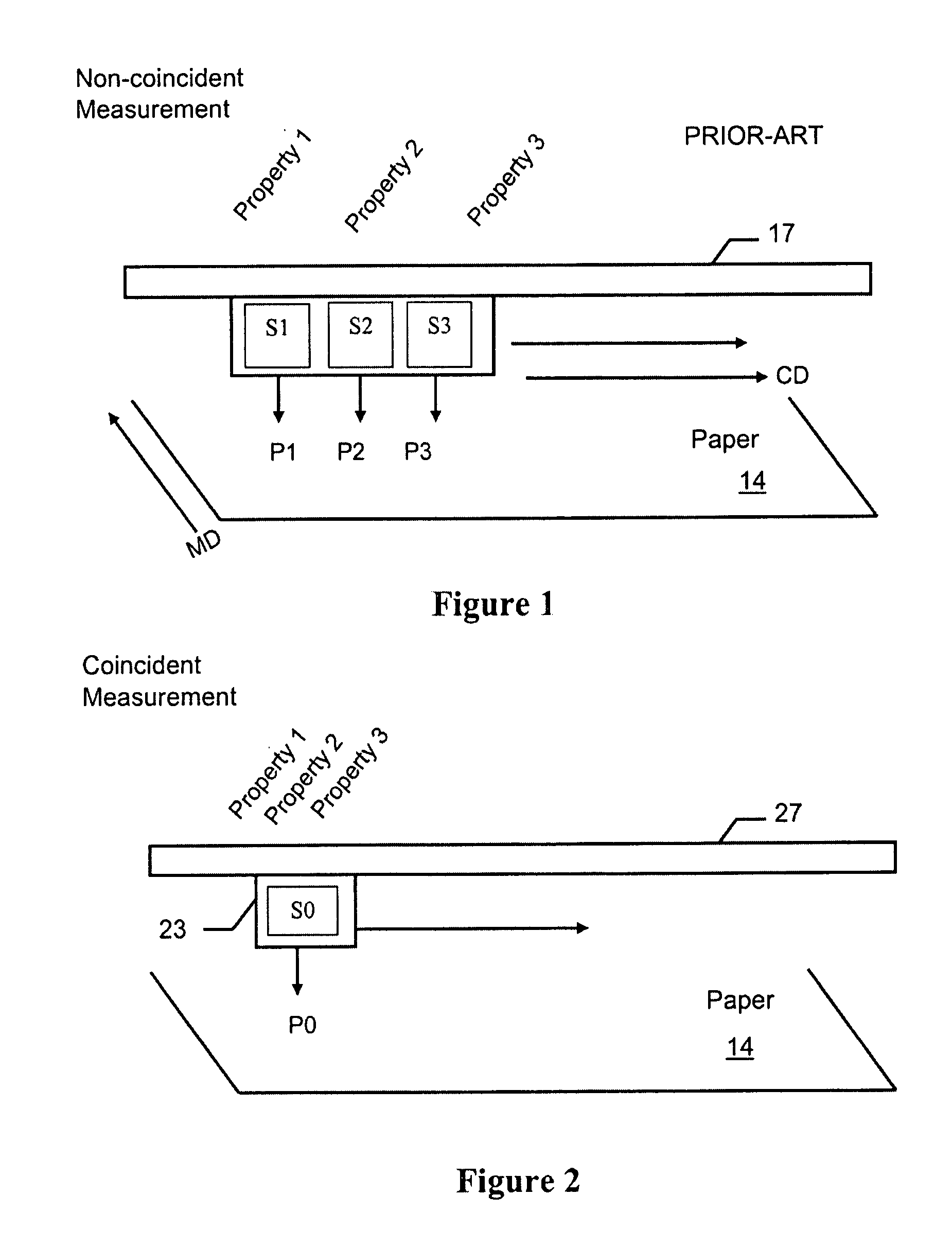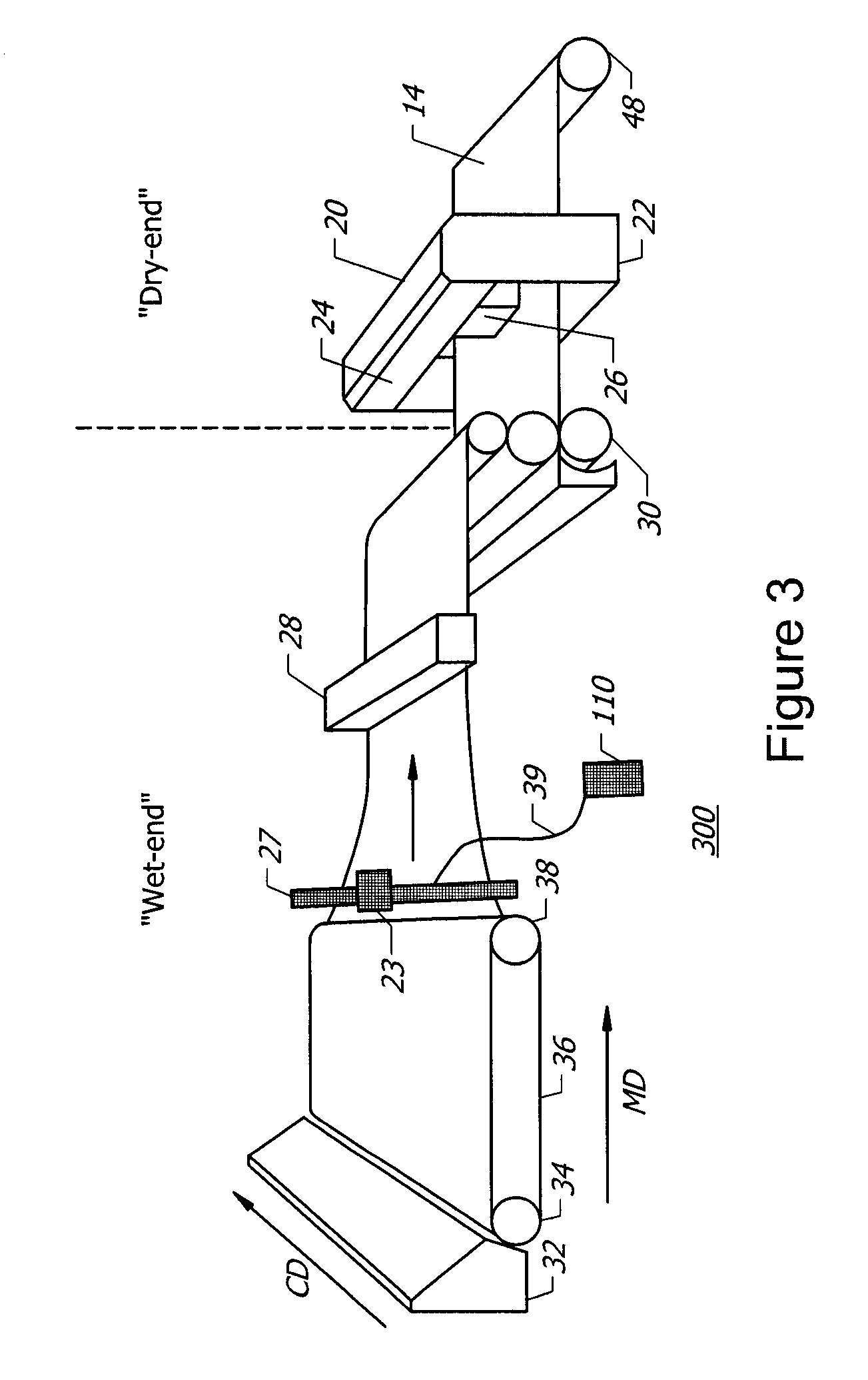Material measurement system for obtaining coincident properties and related method
a measurement system and coincident property technology, applied in the field of process control systems, can solve the problems of affecting the quality of paper produced, sb>3/b> together are generally bulky in size, and cannot be easily fitted, or placed
- Summary
- Abstract
- Description
- Claims
- Application Information
AI Technical Summary
Benefits of technology
Problems solved by technology
Method used
Image
Examples
Embodiment Construction
[0028]Referring FIG. 2, an exemplary sensor device 23, according to an embodiment of the invention for simultaneously measuring at least one property, and generally a plurality of properties, of a material, such as paper 14, is shown. In one arrangement, the sensor device 23 can be coupled to a scanner 27 operable to move the sensor device 23 across the width of the paper, transverse to the paper translation path. In another arrangement, the sensor device 23 can remain at a fixed location along the length of the scanner 27 for obtaining fixed point measurements. In the fixed embodiment, the mounting device for the sensor generally does not span the entire width of the machine, but generally projects a meter or two from one edge. The sensor device 23 can obtain a plurality of property measurements of the paper 14 coincidently; that is, at the same paper location and at the same time. For example, the sensor device 23 can measure Property 1, Property 2, and Property 3, such as basis w...
PUM
 Login to View More
Login to View More Abstract
Description
Claims
Application Information
 Login to View More
Login to View More - R&D
- Intellectual Property
- Life Sciences
- Materials
- Tech Scout
- Unparalleled Data Quality
- Higher Quality Content
- 60% Fewer Hallucinations
Browse by: Latest US Patents, China's latest patents, Technical Efficacy Thesaurus, Application Domain, Technology Topic, Popular Technical Reports.
© 2025 PatSnap. All rights reserved.Legal|Privacy policy|Modern Slavery Act Transparency Statement|Sitemap|About US| Contact US: help@patsnap.com



